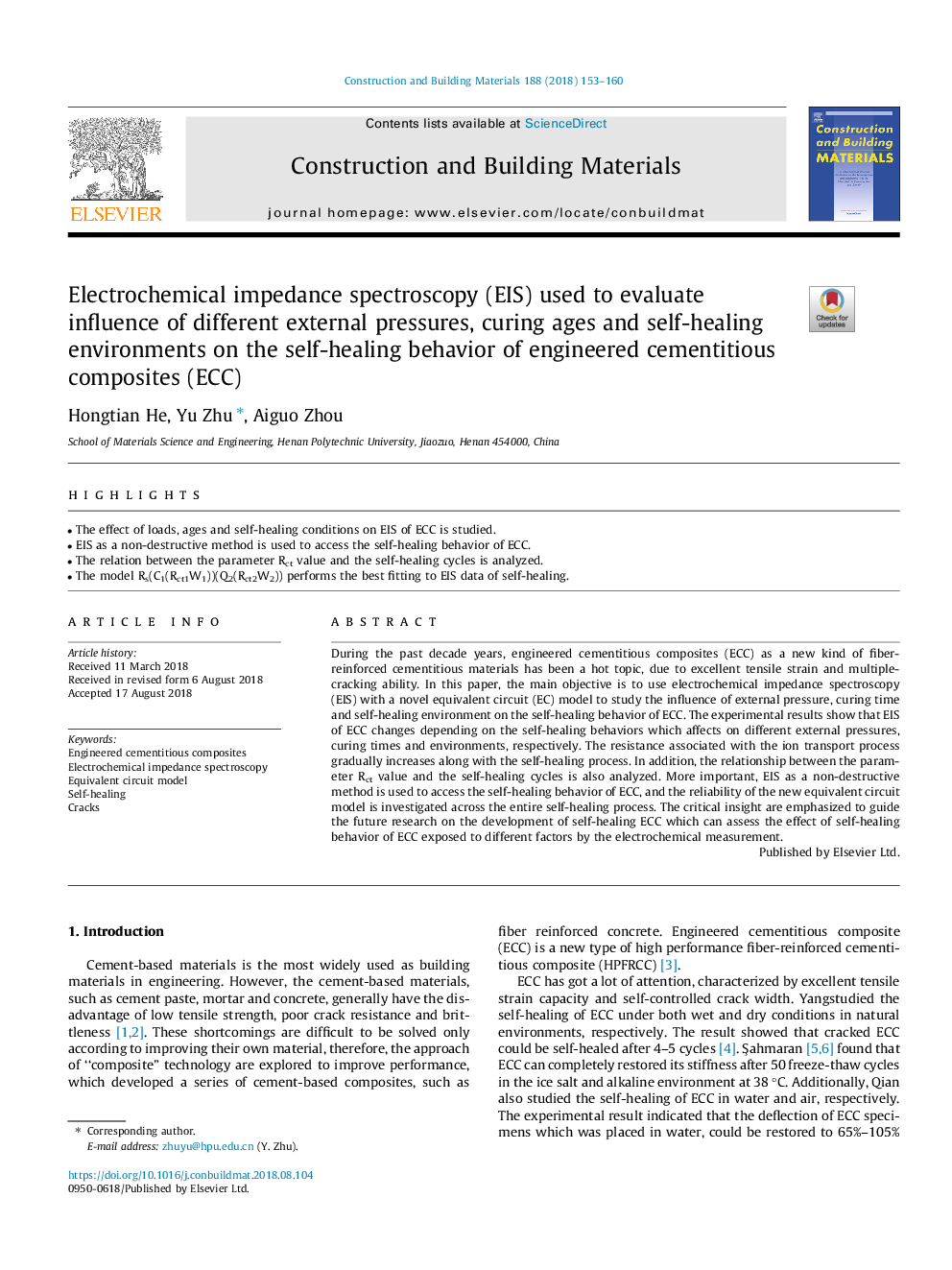| Article ID | Journal | Published Year | Pages | File Type |
|---|---|---|---|---|
| 8947049 | Construction and Building Materials | 2018 | 8 Pages |
Abstract
During the past decade years, engineered cementitious composites (ECC) as a new kind of fiber-reinforced cementitious materials has been a hot topic, due to excellent tensile strain and multiple-cracking ability. In this paper, the main objective is to use electrochemical impedance spectroscopy (EIS) with a novel equivalent circuit (EC) model to study the influence of external pressure, curing time and self-healing environment on the self-healing behavior of ECC. The experimental results show that EIS of ECC changes depending on the self-healing behaviors which affects on different external pressures, curing times and environments, respectively. The resistance associated with the ion transport process gradually increases along with the self-healing process. In addition, the relationship between the parameter Rct value and the self-healing cycles is also analyzed. More important, EIS as a non-destructive method is used to access the self-healing behavior of ECC, and the reliability of the new equivalent circuit model is investigated across the entire self-healing process. The critical insight are emphasized to guide the future research on the development of self-healing ECC which can assess the effect of self-healing behavior of ECC exposed to different factors by the electrochemical measurement.
Keywords
Related Topics
Physical Sciences and Engineering
Engineering
Civil and Structural Engineering
Authors
Hongtian He, Yu Zhu, Aiguo Zhou,
